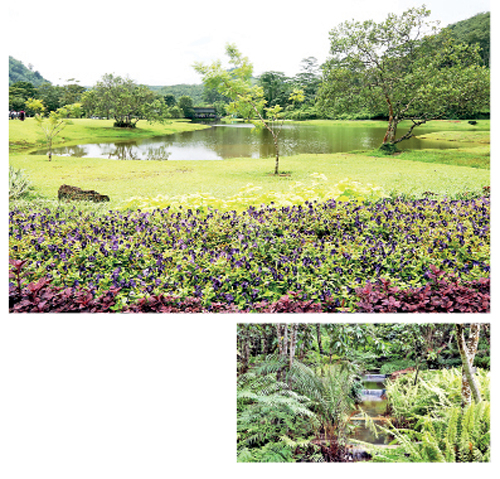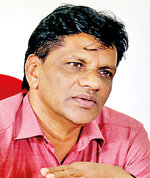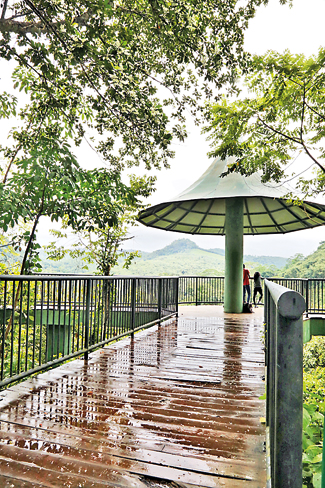A wet zone haven not far from the city bustle

How green is my valley: Sections of Seethawaka. Pix by Nilan Maligaspe
Located at Dikkowita, Thummodara on the Puwakpitiya road in Avissawella, just over an hour’s drive from Colombo is the Seethawaka Wet Zone Botanic Gardens. Situated in an area that receives high rainfall, Seethawaka is the only wet zone botanic garden in Sri Lanka.
Set in a verdant valley surrounded by the Indikada Mukalana forest reserve, the area of 106 acres originally under the Commission of Lands (predominantly a rubber plantation) was earmarked in 2008 and opened to the public on March 25, 2015, as the latest addition to Sri Lanka’s four botanic gardens, Peradeniya, Hakgala, Henerathgoda and Hambantota.
“The main focus of the garden is conservation and preservation of endemic plants specific to the low country wet zone. Threatened plants from Sinharaja, Kanneliya and Bambarabotuwa forest reserves are replanted in the garden. The garden is a research ground for academics and students who are interested in endemic trees and plants,” says H.A.R.R.Ranasinghe, officer- in- charge. The Seethawaka wet zone botanic gardens is managed by the Department of National Botanic Gardens, Ministry of Sustainable Development and Wildlife.

H.A.R.R.Ranasinghe
There are 26 endemic plants in the garden unique to the low country wet zone among them Aidia gardneri, Areca catechu, Cinnamomum zeylanicum, Ficus fergusoni and Litsea longifolia.
In addition to plants, animals, specific to the low country wet zone, some of them endangered such as the purple-faced langur frequent the gardens. The toque macaque (rilawa), porcupine, rabbit, Sri Lankan spotted chevrotain (mouse deer), jungle-fowl, giant squirrel and snake species can be found at the botanic garden, but usually stay in the forested areas and hence are not easy to spot, officials say.

A view from the top
Visitors can stroll through different sections, such as the kumbuk section, central lawn, memorial trees, fernery, Japanese garden, arboretum in two sections – forest and forest reserve, orchard and medicinal garden, summit garden, rose garden with 75 varieties, threatened plant collection, nursery and a plant sales centre. Around 48 minor staff members maintain the garden.
Seethawaka has proved a popular expedition for schoolchildren who come on educational trips, couples who seek its beauty and remoteness and families looking for an enjoyable day out.
Poya days, long weekends and school holiday months record a high number of visitors. Ticket prices for Lankan adults are Rs.100 while for children between 5 to 12 years and senior citizens over 60 years, it is a nominal Rs. 20. For foreign adults the tickets cost Rs.2000 while for children it is Rs.1500 while foreign students pay Rs.1750.
Golf carts are available for those who cannot walk its vast area. These can be hired at Rs.1000 for three passengers and Rs.2000 for six passengers. Self pedaling swan boats are available for Rs.300 per half hour to go boating in the serene lake amidst the garden next to the central lawn.
With 25 acres yet to be developed including the palmatum and floricultural unit, Seethawaka is a work in progress. Specific plants can be obtained by placing prior requests at the plant centre.
With a viewpoint at the summit that offers a panoramic view of the shimmering lake, gardens, roses in bloom and the valley below, the park is a place of beauty and haven for endemic plants.



